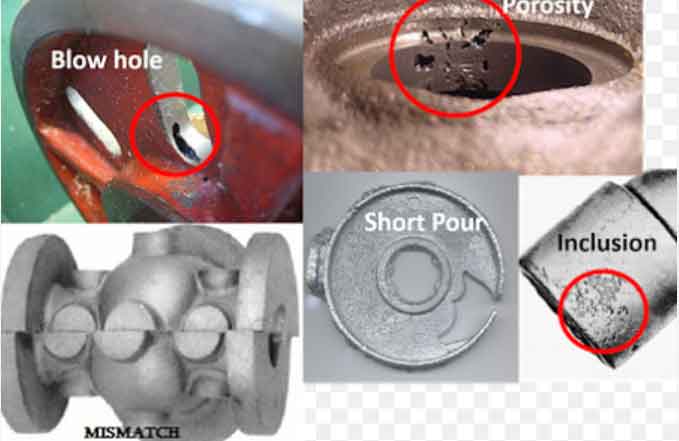
Continuous improvement is a fundamental principle in the casting industry, aiming to reduce defects, enhance efficiency, and improve overall casting quality. By implementing continuous improvement practices, manufacturers can identify areas of improvement, implement targeted solutions, and optimize their casting processes. This article highlights key strategies for continuous improvement in casting, focusing on defect reduction and efficiency enhancement.
- Defect Analysis and Root Cause Identification:
- Conduct thorough defect analysis to identify the root causes of casting defects.
- Utilize techniques such as visual inspection, non-destructive testing (NDT), and statistical analysis to pinpoint the underlying factors contributing to defects.
- Implement a structured approach, including the use of tools like fishbone diagrams, Pareto analysis, or 5 Whys, to identify the root causes of defects.
- Data-Driven Decision Making:
- Collect and analyze data related to casting defects, process parameters, material properties, and quality metrics.
- Use statistical tools and techniques to identify patterns, trends, and correlations in the data.
- Base improvement initiatives on data-driven insights to ensure targeted and effective solutions.
- Process Optimization:
- Optimize process parameters, such as pouring temperature, cooling rates, gating system design, or mold design, to minimize defects and enhance casting quality.
- Implement process control measures, such as monitoring and adjusting process variables, to ensure consistency and repeatability.
- Utilize advanced technologies, such as computer simulations or predictive modeling, to optimize the casting process and minimize defects.
- Material Control and Management:
- Establish stringent material control practices, including proper material handling, storage, and quality assurance procedures.
- Implement thorough inspection and testing of incoming materials to ensure their suitability for the casting process.
- Collaborate closely with suppliers to maintain a consistent supply of high-quality materials.
- Employee Engagement and Training:
- Foster a culture of continuous improvement by involving employees at all levels in identifying improvement opportunities.
- Provide training and development programs to enhance employees’ skills and knowledge in casting techniques, defect recognition, and process optimization.
- Encourage employee participation in problem-solving initiatives and reward innovative ideas.
- Quality Assurance and Feedback Loops:
- Implement robust quality assurance practices, including in-process inspections, final inspections, and customer feedback analysis.
- Establish feedback loops to capture lessons learned from defects, customer complaints, and process variations.
- Use feedback to drive continuous improvement efforts and address root causes of defects.
- Collaboration and Benchmarking:
- Collaborate with industry peers, research institutions, and experts to share best practices, exchange knowledge, and benchmark performance.
- Participate in industry conferences, seminars, and forums to stay updated on the latest advancements and trends in casting technology.
- Continuous Training and Education:
- Stay abreast of new casting techniques, materials, and technologies through continuous training and education.
- Encourage employees to pursue professional development opportunities and attend workshops or seminars to enhance their expertise.
Continuous improvement is vital in the casting industry to reduce defects, enhance efficiency, and improve overall casting quality. By implementing strategies such as defect analysis, data-driven decision making, process optimization, employee engagement, and collaboration, manufacturers can continuously enhance their casting processes, minimize defects, and meet customer expectations. Continuous improvement practices foster a culture of innovation and drive sustained growth in the casting industry.
